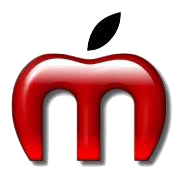Why You Should Back Up Your Mac
Backing up your Mac is crucial because it protects your data from loss due to hardware failure, accidental deletion, theft, malware, or system corruption. If something goes wrong, a backup lets you quickly restore your files, apps, and settings—saving time, money, and frustration.
- Protect Against Hardware Failure: Hard Disk Drives (HDDs) and Solid State Drives (SSDs) can fail without warning. A backup ensures you don’t lose important documents, photos, or work.
- Accidental Deletion or Corruption: If you delete something by mistake or a file becomes corrupted, a backup lets you recover it.
- Security Threats (Malware, Ransomware): Backups protect your data from being held hostage or erased by malicious software.
- Theft or Loss: If your Mac is stolen or lost, you can restore everything to a new device.
- Ease of Migration: When upgrading to a new Mac, a backup makes transferring your entire system seamless.
Common Types of Backups
The two most common backup methods we’ll discuss here are local backups and cloud backups. A local backup (or Time Machine backup on Mac) is created on a connected external backup device. On the other hand, a cloud backup stores your files encrypted on remote servers via the internet, managed by a third-party provider. You can choose to use one backup method or combine both for enhanced security.
- Time Machine offers a straightforward setup with automatic operation. Simply plug in the external backup device, and backups are created hourly for the past 24 hours, daily for the past month, and weekly for older data. You can quickly restore your entire Mac, individual files, or specific versions of documents. There’s only a one-time cost associated with the external backup device purchase – twice the size of your internal drive.
- Cloud services encrypt and upload files continuously or on a scheduled basis. They require Internet access and incur ongoing subscription fees. Data can be accessed from anywhere with an Internet connection, and restoring from the cloud depends on your internet speed. One advantage of cloud services is the ease of expanding capacity without the need to purchase new drives.
Which Backup Solution Should You Use?
Ideally, both together gives you the highest level of protection:
- Time Machine for quick, local, full-system backups and fast restores.
- Cloud backup for off-site, disaster-proof protection and access when you’re away from your Mac.
This approach is known as the 3-2-1 backup strategy:
- 3 copies of your data
- 2 local (one on your Mac and one Time Machine device)
- 1 off-site (cloud)
How to Set Up and Use Time Machine ing Time Machine
Get an External Storage Device
- Choose an external drive with at least double your Mac’s storage and correct connector (USB, Thunderbolt, or USB-C) compatible with your model of Mac.
- SSDs are faster, while HDDs are usually less expensive.
Connect the External Storage Device
- Plug it into your Mac via USB, Thunderbolt, or USB-C (depending on your model of Mac).
Enable Time Machine
- Click the Apple logo () in the upper-left corner of your screen.
- Select System Settings.
- Select General.
- Select Time Machine.
- Click Add Backup Disk (or the plus (+) sign).
- Select your external storage device and click Set Up Disk.
- If you want to encrypt the data on you backup disk, enter a strong encryption password in the New Password and Re-enter Password fields (don’t forget to give yourself a hint in case you forget the password). Otherwise, toggle off Encrypt Backup.
- Click Done.
- Click the Options button if you want to customize additional backup preferences.
The Time Machine Backup Process Begins
Your Mac will begin preparing your backup device and the initial backup will begin shortly afterwards. The initial backup may take a while, depending on how many files are on your system and the speed of the external backup device. But you can continue to use your system throughout the process.
You will get a notice telling you when the initial backup is complete. Time Machine will continue to run automatically as long as your external backup device is connected to your Mac and it is plugged into power. When your external storage device becomes full it will delete older files to make room for new ones.
Test Your Time Machine Backup
You should test a backup regularly, before and after major system changes, and when a new system or application is introduced to ensure the data is complete, accurate, and accessible for recovery when needed. Testing frequency should be based on the criticality and volatility of your data, with more frequent tests (weekly/monthly) for high-risk or rapidly changing data, and less frequent tests (quarterly) for stable data.
- Click the Time Machine icon on the system menu bar.
- Select Browse Time Machine Backups to confirm files are there.
Manually Start Time Machine Backup
You’d perform a manual backup when you’ve made significant changes you want to immediately protect, before an important event like a software update, or for sensitive data requiring an extra layer of security beyond your regular automated schedule. It ensures a backup exists for a specific moment, creating a point-in-time snapshot to use if you need to revert to that state without waiting for the next automatic backup.
- Click the Time Machine icon on the system menu bar.
- Select Back Up Now.
Here is an excellent short video from Apple Support describing how to set up and use Time Machine.
What is iCloud Drive?
- iCloud Drive is a cloud-based file storage service that syncs your documents, photos, and other files across all your Apple devices and the web, allowing you to access and modify them from anywhere.
- iCloud Drive is not a true backup service. Instead, it can automatically sync Documents, Desktop, Photos, and more across all your Apple devices.
How to Set Up iCloud Drive Synchronization on Mac
Before you begin: Update your Mac to the latest macOS and sign in to iCloud with your Apple Account.
- Click the Apple logo () in the upper-left corner of your screen.
- Select System Settings.
- Click your name.
- Click iCloud.
- If prompted, sign in with your Apple Account.
- Under Saved to iCloud, click Drive.
- Turn on iCloud Drive.
- Click Done.
- Close Settings.
- To add the files from your Mac Desktop and Documents folder to iCloud Drive, turn on Desktop and Documents.
WARNING: if you delete a document from your Mac while iCloud Drive with the Desktop & Documents folders feature enabled, it will also be removed from iCloud and all your other devices synced with your Apple ID.
What Cloud Backup Services Are Available?
- Use services like iCloud Drive, Dropbox, or Google Drive for critical files.
- For full-system backups, consider services like Backblaze or Carbonite.
- Tools like Carbon Copy Cloner create an exact, bootable copy of your Mac. This is useful if you want to start working immediately on a new Mac or replacement drive.
Pro Recommendation
- Set up Time Machine right now—it’s free, easy, and reliable.
- Enable iCloud Drive for Documents, Desktop, and Photos to keep essentials synced across devices.
- If your data is business-critical or downtime isn’t an option, add a drive clone (Carbon Copy Cloner) for fast recovery.


